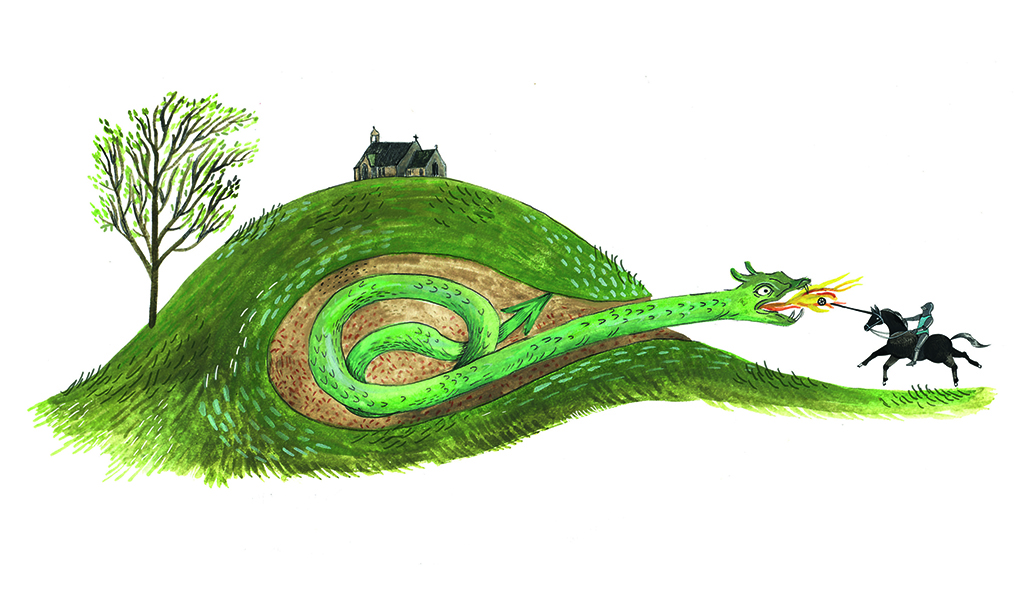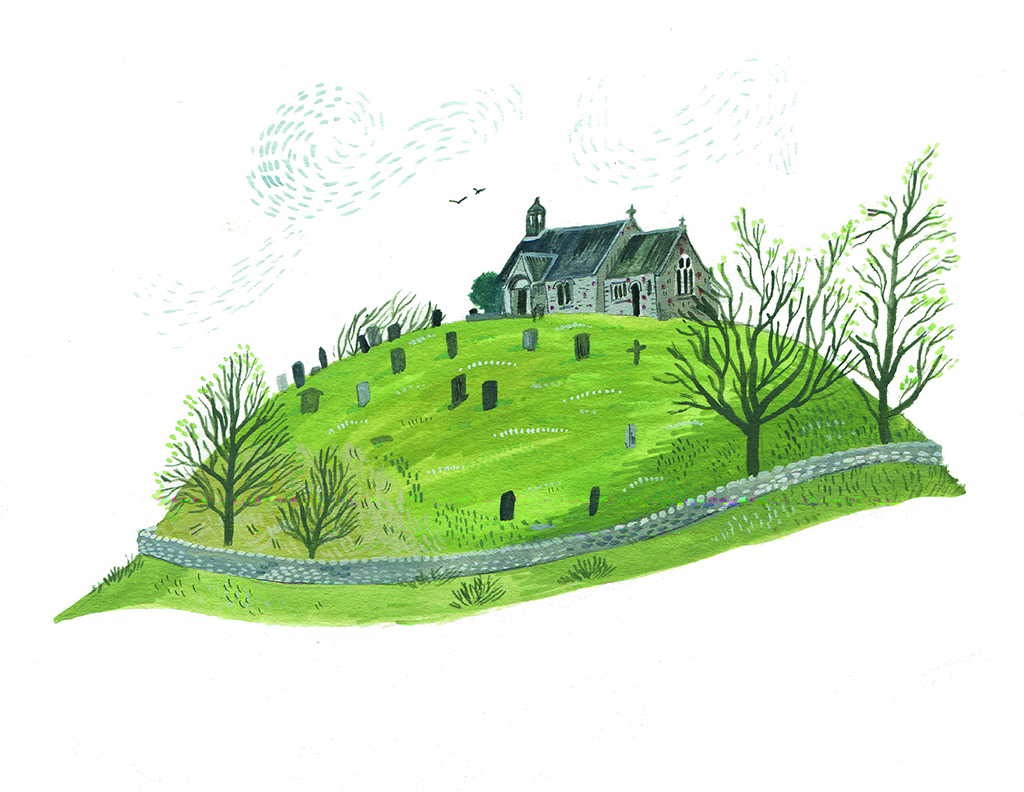
Scotland’s rival to St George and the Dragon
By Eric Bryan
The story of St George and the Dragon has a Scottish rival – the fiery, gory legend of the deadly Worm of Linton.
As fearsome fiends go, the Worm of Linton doesn’t seem to carry quite the same threat as the Beast of Bodmin Moor or even the Creature from the Black Lagoon.
But it nevertheless managed to so terrorise the inhabitants of a little village in the Borders that evidence of its existence can still be seen today, some eight centuries on.
Legend has it that the worm or serpent (in Old Norse, orme or worme means ‘serpent’) had a lair in a hillside close to Linton, itself about six miles south-east of Kelso in present-day Roxburghshire. It ravaged the local countryside, prowling through the twilight hours and satisfying its appetite for cattle and any other animal it could swallow.
According to Memorie of the Somervilles; Being a History of the Baronial House of Somerville by James, Eleventh Lord Somerville, edited by Sir Walter Scott and published in 1815, this particular worm was a serpent that measured three Scots yards long (a Scots yard, or ell, was equal to 37 inches), and was at least as thick as a man’s leg. The creature otherwise had the appearance and markings of a native moor adder.
According to the local people, it would creep as far as perhaps two miles from its den in search of prey, launching surprise attacks after con cealing itself in the grass, heather and boggy ground of the Linton countryside. As a result of the serpent’s attacks on pasturing cattle, farmers were forced to move their animals three or four miles away, deserting the local fields.
Moreover, country folk were said to have begun avoiding travelling the roads to the market or even to church for fear of being attacked by the ruthless predator.

The Worm of Linton (Illustration: Lindsay Grime)
Everyone was afraid to get too close to the creature. Killing it with a lance or a sword was reckoned to be impossible, since getting close enough to wield such a weapon would put the fighter in mortal danger of receiving a venomous bite. The people did, however, make some attempt to wound the serpent with darts and arrows. When they found that these could inflict only minor wounds, they decided that the worm must be a punishment visited upon them by God, and that the whole countryside would be razed by the fiend.
While in the south, John Somerville began to hear tales of the crisis that had gripped Linton. Determined to find out what was going on, he made his way north and stopped in the Roxburghshire village of Jedburgh, where the people brought him up to date on the horrors of the ravaging worm.
Many were in such a state of anxious dread that they were on the verge of evacuating the town. Some of the panic was down to the country folk exaggerating or inventing certain aspects of the worm, such as that it had fiery breath at night, or that it had sprouted wings, or that it was growing in size day by day. The reality of the creature was bad enough, and nothing like it had ever been seen in Scotland before.
Somerville rode to see the creature for himself, and waited at dawn some distance from its den. When the worm slithered out and spotted the horseman, it reared up and stared at him. Though watching with its mouth agape, it made no other gesture of aggression.
Somerville approached in order to size up the beast more clearly, and to test whether or not it would attack him. But the serpent did nothing, and instead circled back into its lair. Somerville observed the creature for several days in a row, noting how it moved, and how every time it encountered a human, it always stared with its jaws hanging wide. As he tried to work out possible ways to defeat such an adversary, he came up with the idea of a spear or lance nearly twice as long as was usual, wrapped almost its full length in iron.
He had the specialised weapon constructed, and for some days practised manoeuvres from horseback with it. These involved charging with a square of burning peat stuck to the spear’s tip, as Somerville was contemplating using fire as part of his arsenal, and he needed to get his treasured horse used to all the flames and smoke.

Linton Kirk (Illustration: Lindsay Grime)
Next, Somerville had a small thin iron wheel made and fitted to the lance, several inches from the tip, so that it was free-spinning. Then he hired a servant, appointed a day on which he’d do battle with the worm, and sent the announcement out to all the local inhabitants, inviting them to the spectacle. Some people dismissed Somerville’s proclamation as mere braggadocio; others regarded it as the words of a madman.
On the day in question, just before dawn, Somerville and his servant posted themselves ‘within half ane arrow flight’ of the serpent’s den. Somerville had had several peats, which had been dipped in brimstone and pitch, wired to the wheel of the lance. When the worm emerged halfway out of its lair, Somerville’s servant set the peats alight. Somerville charged towards the monster, plunging the flaming wheel and nearly a third of the spear down the serpent’s throat, the weapon breaking with the force of the impact, despite its iron cladding.
The creature, writhing in agony, caused its lair to collapse, burying it. The now joyful Linton populace excavated the dead serpent and put it on display for many days for the numerous curious travellers who came to marvel at the huge carcass.
Somerville, who had formulated his novel manner of attack because he didn’t know if a lance could pierce the serpent’s body, went on to be knighted for his courage and ingenuity, and was made Royal Falconer and First Baron of Linton by King William the Lion for defeating the worm.
The symbols of a wheel and wyvern, said to represent Somerville’s wheeled lance and the serpent, were added to the Somerville coat-of-arms.
The site of the battle is remembered as Wormiston (‘Worm’s Den’ or ‘Worm’s Glen’, also referred to as Wormington) and the deed has been memorialised in the tympanum above the south door of Linton’s parish church.
This work, known as the Somerville Stone, depicts an armoured knight, carrying a falcon, spearing a beast in the mouth. A local rhyme based on an inscription in the stone tells:
The wode Laird of Laristone Slew the worm at Worme’s Glen,
And wan all Linton Parochine.
TAGS

